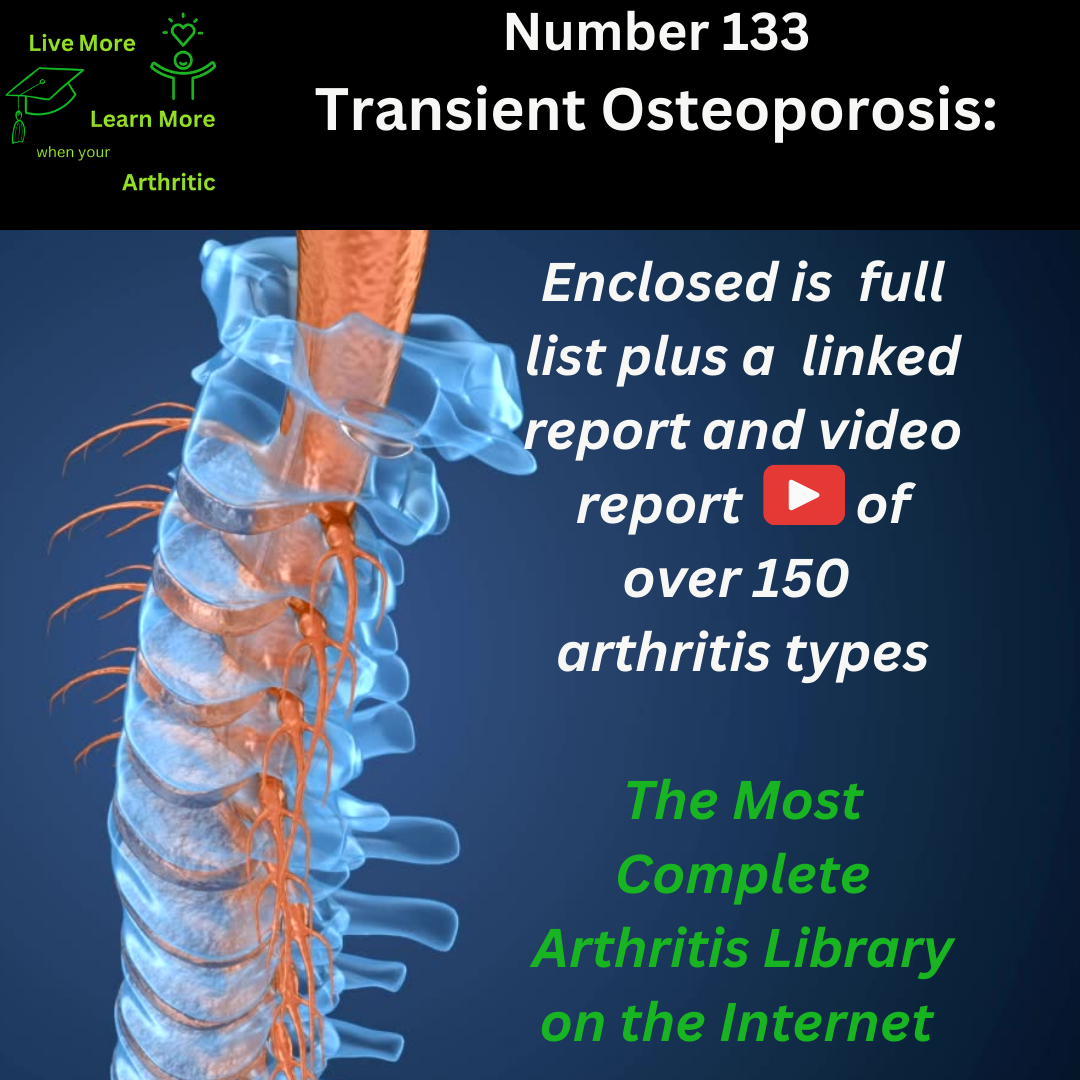
Transient Osteoporosis: Number 133 of around 150 types of Arthritis
Understanding Transient Osteoporosis
Transient osteoporosis, also known as regional migratory osteoporosis, is a rare condition that primarily affects the weight-bearing joints, particularly the hip joint. Despite its temporary nature, it can cause significant discomfort and limitations. Let’s explore the various aspects of transient osteoporosis, including its impact on the body, potential causes, symptoms, and management strategies.
The most commonly affected area in transient osteoporosis is the hip joint, followed by the knee joint. It can also involve other weight-bearing joints such as the ankle and foot.
Description of the Disease
Transient osteoporosis is characterized by a rapid loss of bone density in specific joints, leading to increased fracture risk and limited mobility. It is considered a self-limiting condition, meaning it typically resolves on its own within months.
Causes and Triggers
The exact cause of transient osteoporosis is unknown, but it is believed to be related to altered bone metabolism and blood flow in the affected joints. Certain risk factors such as pregnancy, immobilization, or metabolic changes may contribute to its development.
Symptoms and Limited Range of Motion
Common symptoms of transient osteoporosis include:
- Sudden onset of hip or joint pain
- Difficulty bearing weight on the affected joint
- Limited range of motion and stiffness
- Increased risk of fractures due to bone weakness
Common Ages of Onset and Risk Factors
Transient osteoporosis typically affects middle-aged men in their 40s and 50s, although it can also occur in women, especially during pregnancy. The condition is more prevalent in men.
Complications and Prognosis
While transient osteoporosis resolves spontaneously in most cases, it can lead to complications such as fractures or persistent joint pain if not managed properly. Prognosis is generally favorable with appropriate treatment and lifestyle modifications.
Is Transient Osteoporosis Autoimmune?
Transient osteoporosis is not considered an autoimmune disorder. It is thought to result from altered bone metabolism and blood flow in the affected joints.
Achieving a Higher Quality of Life
A proactive approach to managing transient osteoporosis involves:
- Rest and avoiding weight-bearing activities that exacerbate symptoms
- Physical therapy to improve joint mobility and strength
- Use of supportive devices such as crutches or walking aids
- Maintaining a healthy diet rich in calcium and vitamin D to support bone health
Complications of transient osteoporosis may include:
- Increased fracture risk due to weakened bones
- Prolonged joint pain and stiffness
- Impaired mobility and reduced quality of life
In summary, transient osteoporosis is a rare but self-limiting condition characterized by rapid bone loss in weight-bearing joints, particularly the hip joint. With appropriate management strategies, including rest, physical therapy, and lifestyle modifications, individuals with transient osteoporosis can achieve a higher quality of life and minimize the risk of complications associated with this condition. Regular follow-up with healthcare providers is essential for effective symptom management and optimal recovery.



